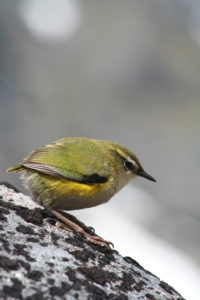The battle for the bush (and swamp, riverbed and shore) is being fought not just on the ground in New Zealand, but also in research labs and on computer screens around the country. New ideas are being brainstormed and innovations in predator control are being computer-modelled and tested in the field. So what have some of our top researchers been working on recently?
Bruce Warburton and Andrew Gormley at Landcare Research, Lincoln have recently published research looking at the optimal use of multiple-capture traps. They used a modelling approach to simulate different pest population scenarios and determine the most cost-effective, non-toxic methods for control. Warburton and Gormley examined model populations of possums, stoats and ship rats and looked at whether multiple-capture or single capture traps were the most cost-effective once a pest management programme was in place and pest populations were being maintained at low densities. You can read their research paper in full here: Optimising the Application of Multiple-Capture Traps for Invasive Species Management Using Spatial Simulation (2015).
Meanwhile Hamilton-based researchers Bridgette Farnworth and Joseph Waas (University of Waikato) and John Innes (Landcare Research) have been studying ways to turn the instinctive behaviour of nocturnal foragers into a conservation tool. Studying both wild and captive mice they found that mice avoided artificial light, with its associated risk of predation, even though the avoidance limited their foraging activity. The authors propose that using artificial light could be a useful conservation tool at ecologically sensitive sites – if, for example, a predator-proof fence at a sanctuary was damaged and emergency measures were needed until the fence could be properly repaired. Shipping docks that service offshore islands might also benefit from bright artificial lighting as an additional conservation precaution. Check out their research in full at: Converting Predation Cues into Conservation Tools: The Effect of Light on Mouse Foraging Behaviour (2016).
James Russell and Keith Broome have just published an overview of where we are with rodent eradication and how we’ve progressed in the last 50 years. Their article, published in the New Zealand Journal of Ecology,reviews our early history of rodent management, including the devastating Big South Cape Island/Taukihepa ship rat invasion and documents major advances in the last decade in multispecies eradications, community engagement, the transfer of techniques to mainland eco-sanctuaries and the development of new tools for rodent management. The article also looks at the challenges we still face, including efficiencies of scale on large islands and implementing cost-effective barrier technologies on the New Zealand mainland. You can read their overview in full here: Fifty years of rodent eradications in New Zealand: another decade of advances (2016).


